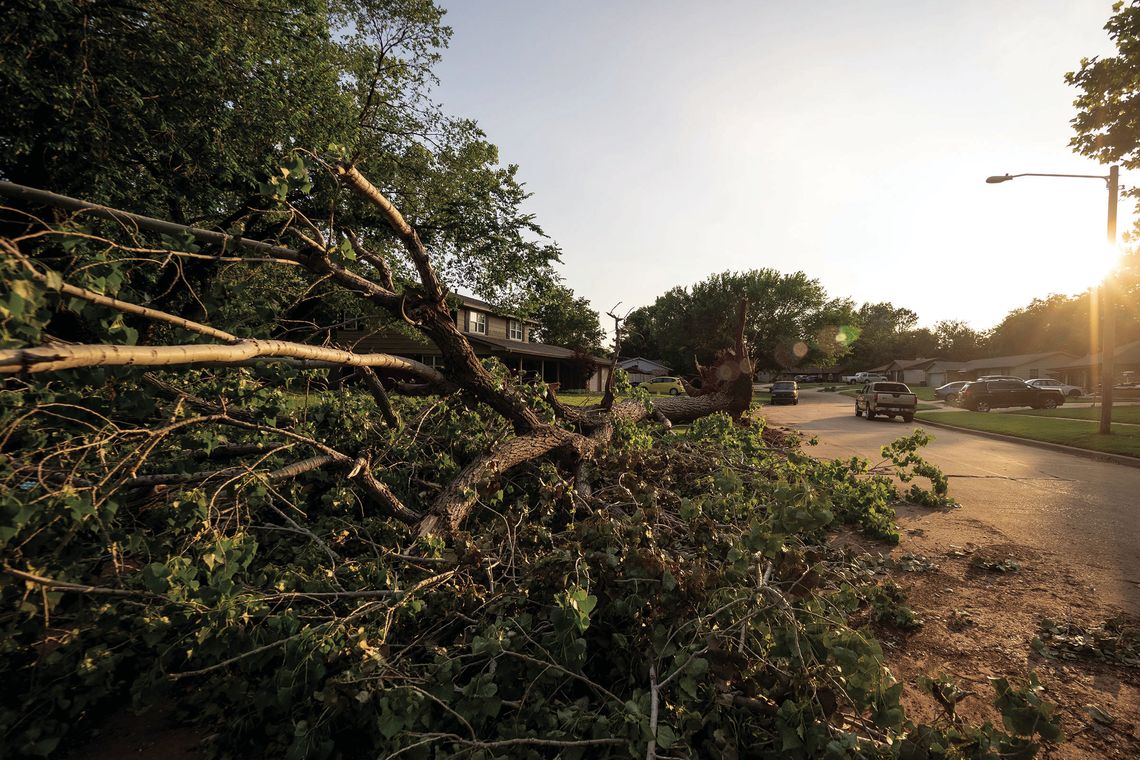STILLWATER, Okla. – When the wind comes sweeping down the plains in Oklahoma, it’s not unusual for it to take out a tree or carport, or send a trampoline flying into the neighbor’s vehicle. When homeowners experience damage during a storm, they’re quick to call their insurance agent and start a claim.
But what happens if the neighbor’s tree causes the damage? That depends on several factors, said Mengya Wang, Oklahoma State University Extension finance specialist.
“Damage to your home caused by a healthy tree that falls during a storm is considered an act of nature in an insurance policy, and the homeowner with damage will need to file a claim with their insurance company,” Wang said. “However, if the tree was unhealthy, it may be the neighbor’s responsibility to repair the damage.”
If the tree was dead, diseased or visibly leaning, and the neighbor was aware of the risk but didn’t remove it, he or she is responsible for damages, if negligence can be proven.
She suggests taking pictures of the tree and sending a letter or email to the neighbors to bring the situation to their attention.
“In this case, it’s a risk for the neighbors to not take the tree down,” Wang said. “Photos can show signs of disease, decay or instability. Homeowners may want to obtain a tree professional’s opinion or get an inspection. Keep these records along with correspondence from the neighbor regarding the tree’s condition. The key is to show negligence on the neighbor’s part.”
However, if a homeowner’s diseased tree falls on his or her house or car, the policy may not cover the damage, if the homeowner didn’t initially address the issue.
“Insurers could deny your claim by saying you didn’t take reasonable precautions to prevent the damage,” Wang said.
Shelly Woolley, an insurance agent with The Woodlands Financial Group, said an insurance policy protects the biggest investment most people make. When homeowners shop for insurance, clearly define what a policy does and doesn’t cover.
“When shopping for insurance, it’s important to understand the terminology. Be sure to clarify if the policy is replacement cost or the value of the mortgage,” Woolley said. “Potential and current homeowners need to understand flood damage and water damage are two different things. Flood damage is caused by rising water outside of the home. Water damage occurs when the washing machine overfl ows, pipes freeze and burst, or the water heater leaks.”
In the event of a homeowner’s property causing damage to a neighbor’s property, the homeowners need to understand what their policy will and will not cover.
“In the case of a tree falling on your neighbor’s car, house or fence, it depends on the condition of the tree,” she said. “It’s prudent to keep your property maintained so you won’t be held responsible for damages. If the neighbor’s tree is the issue, there may be physical or financial reasons they haven’t maintained the property. Start by having a conversation with them.”
Woolley said there have been a lot of changes in insurance policies in the past year, so understanding the coverage outlined in the policy is vital.
“You don’t want to be surprised when filing a claim and find out something isn’t covered,” she said. “Sit down with the prospective agent to help gain a full understanding of the policies the agent offers.”
Dealing with damage to a home or other personal property can be stressful, and Wang said knowing what’s included in the policy can help homeowners be better prepared when something happens.
“Insurance policies put homeowners at ease, and how much they pay for the policy depends on the amount of risk they want to take,” Wang said. “Lower costs can mean higher deductibles, so it’s important for homeowners to have money available to pay those deductibles when needed. Also, insurance policies have a lot of terminology; therefore, it’s important to educate yourself before purchasing a policy.”
OSU Extension uses research- based information to help all Oklahomans solve local issues and concerns, promote leadership and manage resources wisely throughout the state's 77 counties. Most information is available at little to no cost.



